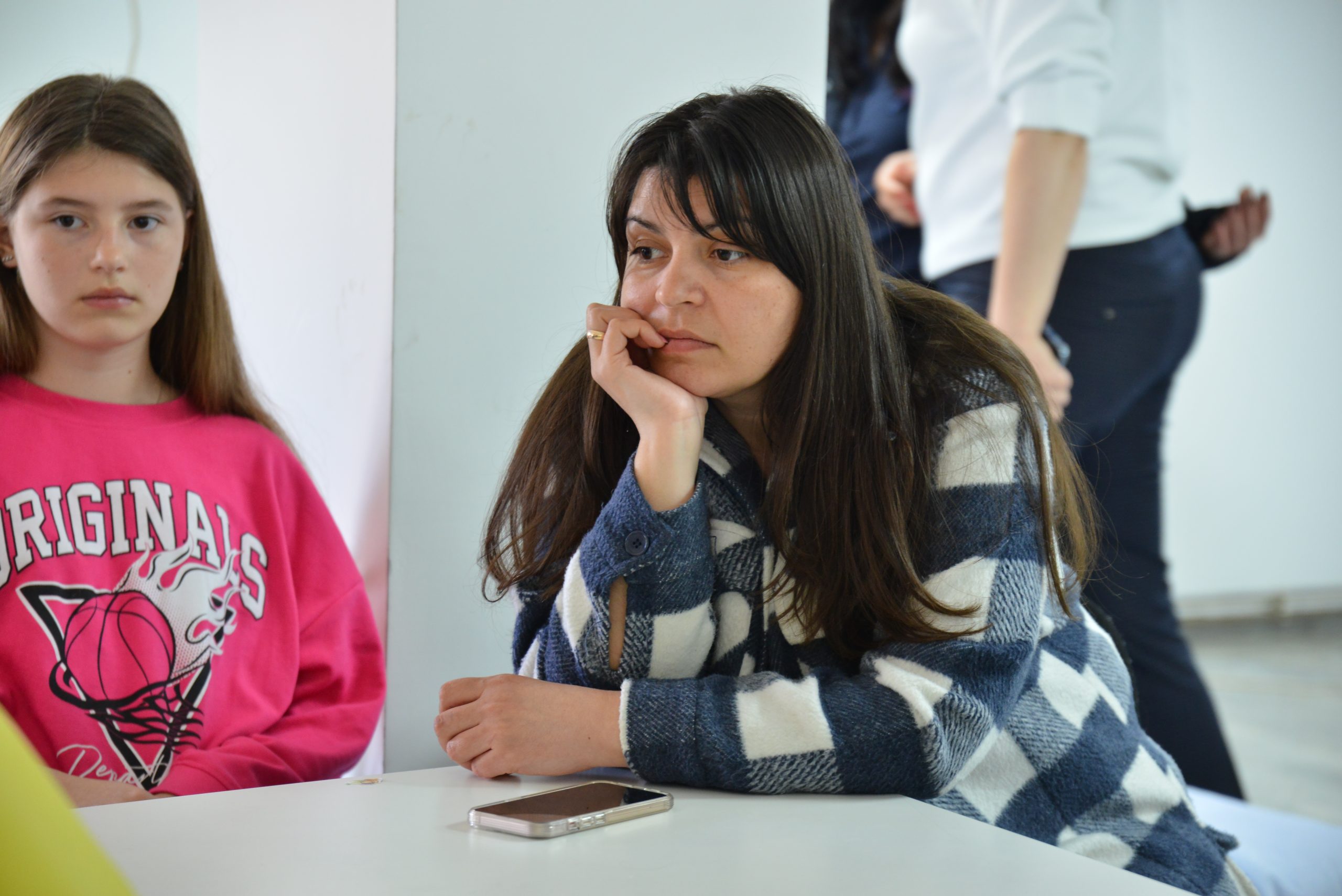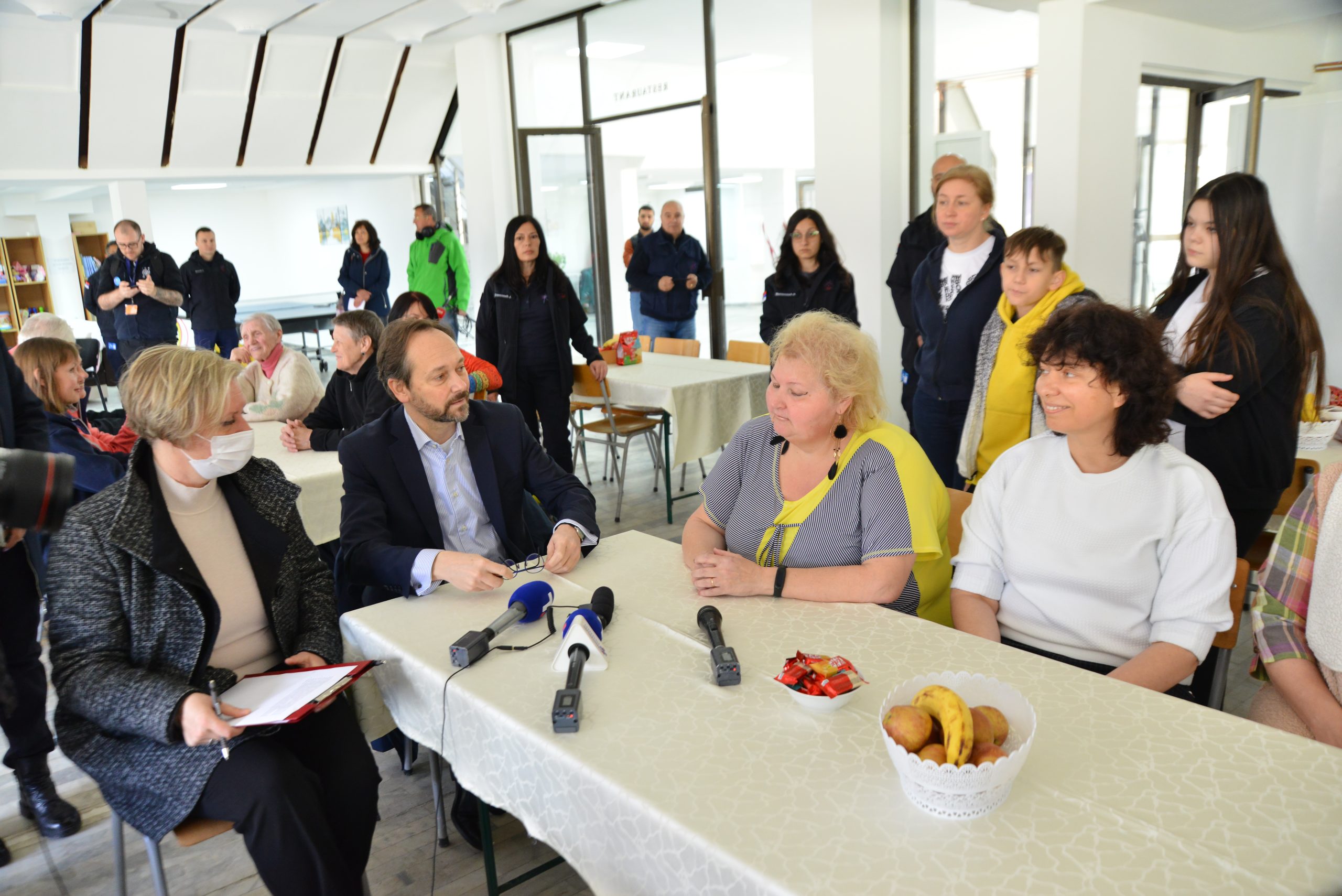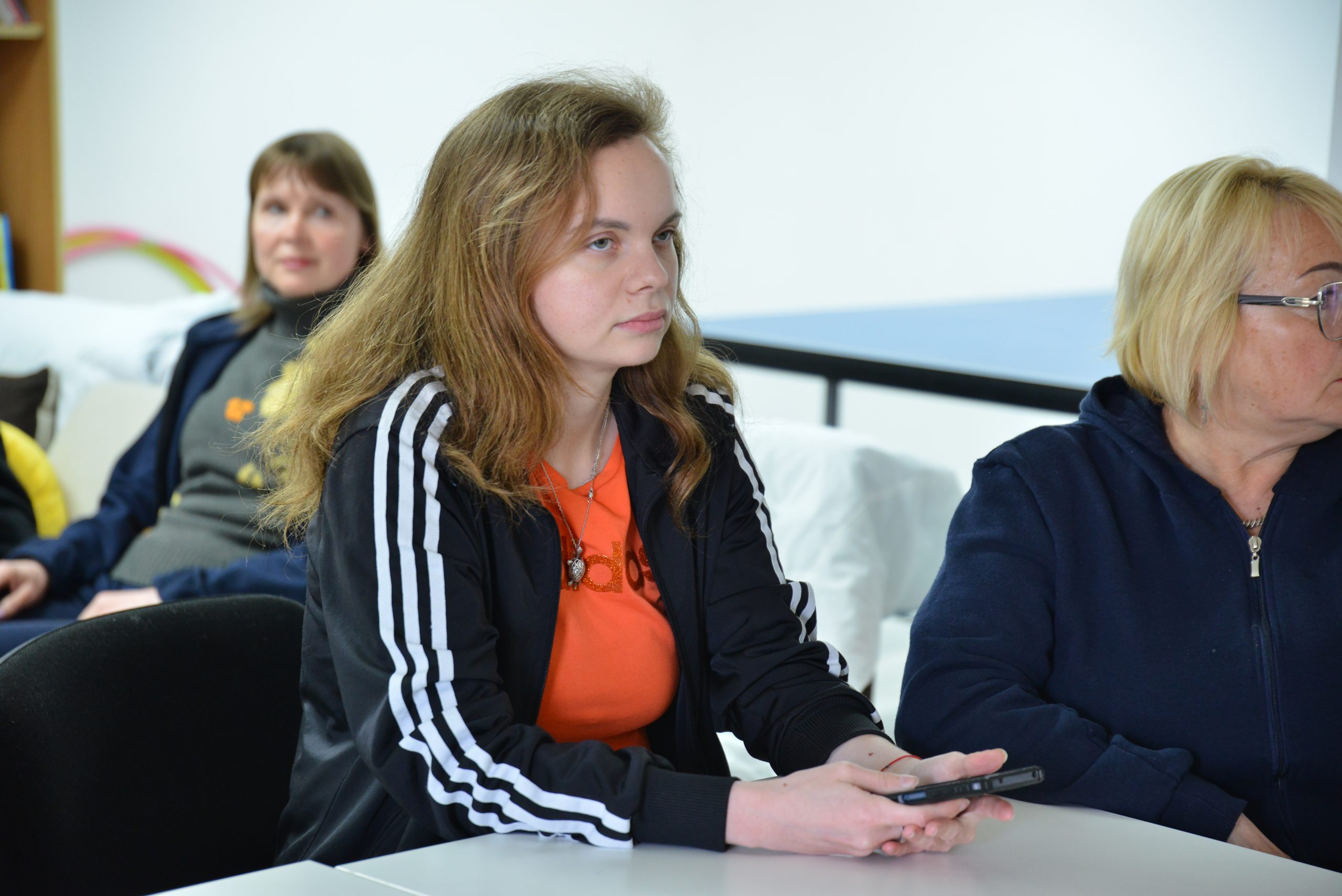Fleeing from the aggression of the Russian army on their country, many Ukrainians, mostly women and children, sought their new home in Serbia. So far, 5,808 of Ukrainians have registered their residence in Serbia, mostly in private accommodation, and 57 people who escaped from war-torn Ukraine are currently accommodated in the Centre for Asylum in Vranje.
Victoria is one of the women who found refuge from the Donetsk region in Ukraine in the Asylum Centre in Vranje. She fled to Serbia with her mother and son, and although she is going through an unimaginable and difficult period in her life, she is satisfied that her son is going to school in Vranje using, together with other children accommodated in the Centre, the organised transportation provided by the Commissariat. The Ukrainian refugees are accepted with a lot of solidarity and understanding for their difficult situation not only in the Centre, but in the whole city, and Victoria is grateful for that.

“After the horrors we survived and left behind, we received a reception full of respect and understanding here, and we are grateful to the Serbian people for that,” concludes Victoria.
Some of the Ukrainian refugees are planning to travel towards the European Union, but there are also those who want to stay in Serbia. Many of them, like Elena from Donbas, have family and business ties with Serbia built before the war.
For others, the closeness of the two peoples is what reinforces their intention to continue living in our country. The similarity of language, culture and customs, but also the hospitality of the people of Vranje makes it easier for refugee women and their families to overcome the trauma of leaving war-torn homes in Ukraine.

During a recent visit to the Centre, EU Ambassador to Serbia Emanuele Giaufret was assured that the refugees coming to Serbia receive the same level of protection as those in the European Union. This is the result of many years of the EU cooperation with the Commissariat for Refugees of the Republic of Serbia, through which the Commissariat has built the entire infrastructure and system that can provide support to all those who need help.
Since 2015, the EU has supported financially supported Serbia in migration management sector. Some of the results of that support are visible in the quality of the Centre’s service in Vranje and the level of equipment of the accommodation capacities, but also playing and learning spaces for refugee children, as well as the built and fully equipped clinic that operates within the Centre.
Ambassador Giaufret was able to find out in conversation with the women and children from Ukraine about the equipment that the Centre offers, as well as the sensibility of the staff and how much that support means to them in these complex and traumatic circumstances.
“Since the Russian invasion of Ukraine, more than 4.38 million people have been forced to leave their country and homes, leaving behind their friends, relatives, homes, schools and businesses, their children’s toys. These lost parts of their lives cannot be made up, but we can do our best to help these people feel safer, cared for and accepted”, said Ambassador Giaufret during the visit.

The EU is the strongest partner and support of the migration management of Serbia, and the Commissariat for Refugees and Migration is an important partner in the implementation of projects in this field. Since 2015, when the increased influx of migrants to the territory of Serbia began, the EU has donated over EUR 130 million to support Serbia’s capacity for migration management.
The Centre for Asylum in Vranje was recently reconstructed with about EUR 660,000 from the EU funds and EUR 330,000 from the state budget of Serbia. The EU has also continuously supported Serbian institutions to provide unhindered access to education for migrant children since 2015 through assistance in formal and informal education.




